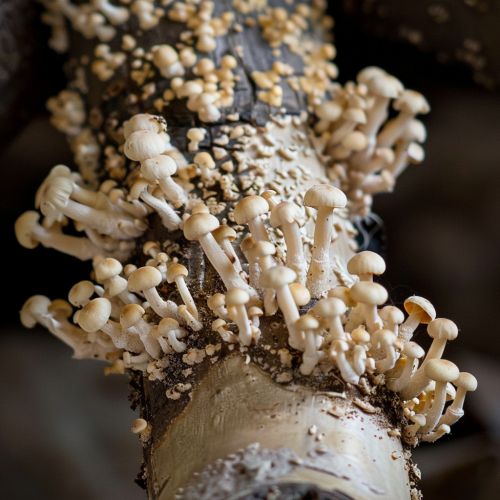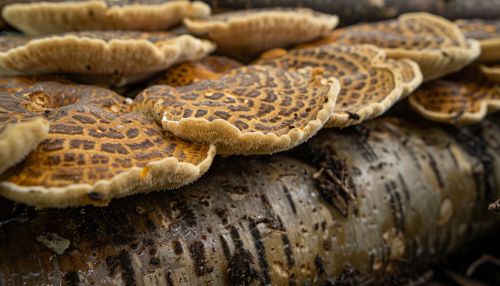Ectomycorrhizal fungi
Introduction
Ectomycorrhizal fungi (EMF) are a group of fungi that form symbiotic relationships with the roots of various plant species, particularly trees. These fungi play a critical role in forest ecosystems by enhancing nutrient uptake, improving soil structure, and contributing to plant health and growth. This article delves into the biology, ecology, and significance of ectomycorrhizal fungi, providing a comprehensive overview of their role in natural and managed ecosystems.
Biology of Ectomycorrhizal Fungi
Morphology
Ectomycorrhizal fungi are characterized by their ability to form a sheath, or mantle, around the roots of their host plants. This sheath is composed of fungal hyphae that extend into the soil, forming a network known as the extraradical mycelium. The hyphae penetrate the root cortex but do not invade the root cells, instead forming a structure called the Hartig net, which facilitates nutrient exchange between the fungus and the plant.


Life Cycle
The life cycle of ectomycorrhizal fungi involves both sexual and asexual reproduction. Sexual reproduction typically occurs through the production of fruiting bodies, such as mushrooms or truffles, which release spores into the environment. These spores germinate to form hyphae that seek out and colonize new plant roots. Asexual reproduction can occur through the fragmentation of hyphae or the production of specialized structures called chlamydospores.
Ecology of Ectomycorrhizal Fungi
Symbiotic Relationships
Ectomycorrhizal fungi form mutualistic associations with a wide range of host plants, including many economically important tree species such as pines, oaks, and eucalypts. In these relationships, the fungi provide the plants with enhanced access to nutrients, particularly phosphorus and nitrogen, while the plants supply the fungi with carbohydrates produced through photosynthesis.
Soil Interactions
The presence of ectomycorrhizal fungi significantly influences soil structure and fertility. The extensive mycelial networks help to stabilize soil aggregates, improve water retention, and increase soil porosity. Additionally, these fungi play a crucial role in nutrient cycling by decomposing organic matter and releasing nutrients in forms that are accessible to plants.
Importance in Ecosystems
Nutrient Cycling
Ectomycorrhizal fungi are integral to nutrient cycling in forest ecosystems. They decompose organic matter, releasing nutrients such as nitrogen and phosphorus, which are then taken up by plants. This process not only supports plant growth but also contributes to the overall productivity and stability of forest ecosystems.
Plant Health and Growth
The symbiotic relationship between ectomycorrhizal fungi and plants enhances plant health and growth. By improving nutrient uptake, these fungi help plants to better withstand environmental stresses such as drought, disease, and poor soil conditions. This symbiosis is particularly important in nutrient-poor soils, where the presence of ectomycorrhizal fungi can make a significant difference in plant survival and growth.
Applications in Forestry and Agriculture
Forest Management
Ectomycorrhizal fungi are utilized in forest management practices to promote the health and growth of trees. Inoculating tree seedlings with these fungi can improve their establishment and growth rates, particularly in reforestation and afforestation projects. This practice is especially beneficial in degraded or nutrient-poor soils.
Sustainable Agriculture
In agriculture, ectomycorrhizal fungi are used to enhance crop productivity and soil health. By forming symbiotic relationships with crop plants, these fungi can improve nutrient uptake, reduce the need for chemical fertilizers, and increase resistance to pests and diseases. This makes them a valuable tool in sustainable and organic farming practices.
Research and Future Directions
Molecular Biology
Advances in molecular biology have provided new insights into the genetics and functioning of ectomycorrhizal fungi. Techniques such as DNA sequencing and transcriptomics are being used to study the diversity, evolution, and metabolic pathways of these fungi. This research is helping to unravel the complex interactions between ectomycorrhizal fungi and their host plants.
Climate Change
The role of ectomycorrhizal fungi in mitigating the effects of climate change is an area of active research. These fungi can influence carbon sequestration in soils by enhancing plant growth and altering soil organic matter dynamics. Understanding these processes is crucial for developing strategies to manage forest ecosystems in the face of changing climate conditions.
